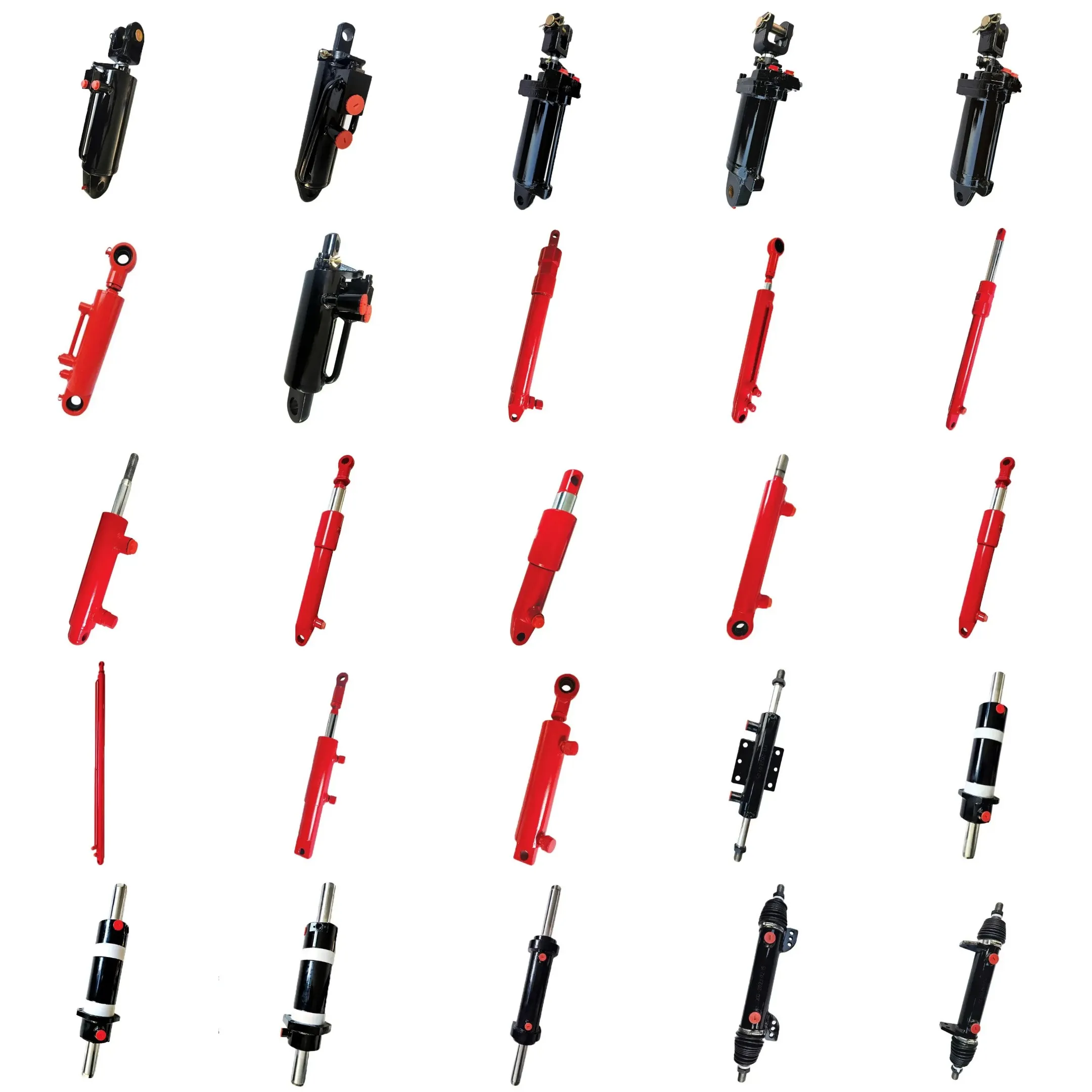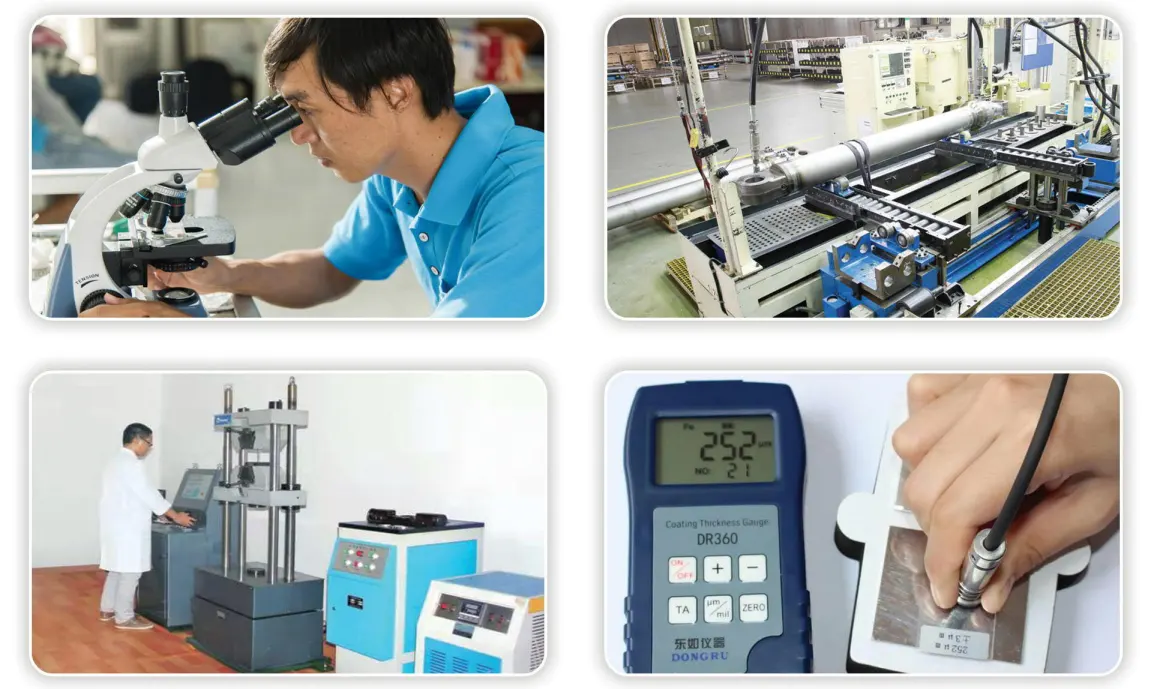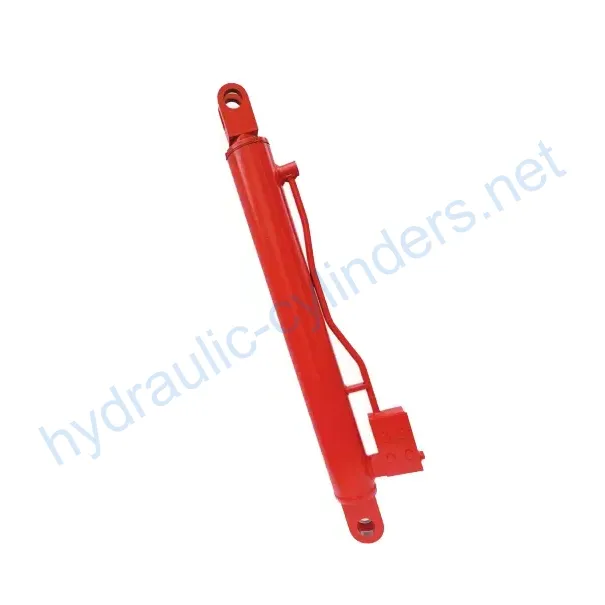Sanitation Vehicle Lift Oil Cylinder
Sebagai salah satu produsen, pemasok, dan eksportir silinder hidrolik, Kami menawarkan silinder hidrolik dan banyak produk lainnya.
Silakan hubungi kami untuk informasi lebih lanjut.
Surat:sales@hydraulic-cylinders.net
Produsen pemasok eksportir silinder hidrolik.
Sanitation Vehicle Lift Oil Cylinder
Product Overview
The Sanitation Vehicle Lift Oil Cylinder is a crucial component in hydraulic lift systems, specifically designed for sanitation vehicles. This oil cylinder operates by converting hydraulic energy into mechanical force, enabling the lifting and lowering of heavy loads efficiently. Its robust design ensures maximum performance and reliability in demanding environments, making it an essential part of sanitation operations. The hydraulic cylinder??s functionality is pivotal in maintaining operational efficiency, ensuring that sanitation vehicles can handle waste materials effectively and safely. Over time, these cylinders can withstand the wear and tear associated with heavy lifting tasks, underscoring their importance in the sanitation industry.
Product Specifications
- Cylinder Diameter: 95mm
- Rod Diameter: 40mm
- Travel: 2040mm
- Installation Distance: 815mm
Parameter Expansion
The specifications of this oil cylinder highlight its robust construction and operational capabilities. The cylinder diameter of 95mm allows for substantial lifting capacity while maintaining stability during operation. The rod diameter of 40mm offers a balance between strength and flexibility, ensuring that the cylinder can endure various operational stresses. The travel distance of 2040mm provides ample lifting height, making it suitable for a wide range of sanitation tasks. Finally, the installation distance of 815mm ensures compatibility with various lift systems, allowing for easy integration into existing sanitation vehicle setups.
Product Features
- High Load Bearing Capacity: Designed to handle heavy loads efficiently.
- Durable Materials: Constructed from high-quality materials to ensure longevity.
- Easy Installation: Compatible with various systems, facilitating quick installation.
- Corrosion Resistance: Coated to withstand harsh environments typically found in sanitation work.
- Customizable Options: Available in different specifications to meet specific customer needs.
We specialize in manufacturing this product, ensuring our offerings perfectly replace existing hydraulic cylinders, enhancing performance without compromising on safety or durability.
Application Scenarios
Sanitation Vehicle Operations
Sanitation vehicles rely heavily on hydraulic lift systems to manage waste efficiently. The oil cylinder enables the lifting of heavy waste containers, facilitating quick and effective waste disposal. This system not only increases operational efficiency but also minimizes the physical strain on sanitation workers, thereby enhancing workplace safety.
Construction Sites
In construction environments, these cylinders are used to lift and transport heavy materials. Their robust design allows for handling significant weight, ensuring that site operations run smoothly. The adaptability of these cylinders makes them suitable for various construction tasks, from material handling to equipment lifting.
Agricultural Applications
Agricultural machinery often uses hydraulic systems for lifting implements and attachments. The sanitation vehicle lift oil cylinder can be utilized in tractors and other agricultural vehicles to lift heavy loads such as plows or seeders, contributing to efficient farming practices and productivity improvements.
Design Considerations and Selection Criteria
Load Capacity
When designing hydraulic cylinders, load capacity is paramount. The cylinder must withstand the maximum weight it will lift without compromising integrity. This involves calculating the tensile strength of the materials used and ensuring that the design can accommodate peak loads over extended periods.
Sealing Performance
Effective sealing is crucial to prevent hydraulic fluid leakage. High-quality seals made from durable materials are employed to ensure a tight fit, reducing the risk of fluid loss and maintaining pressure within the system. Regular checks and maintenance are necessary to uphold sealing performance.
Durability
The durability of hydraulic cylinders is essential for long-term service. Components are crafted from wear-resistant materials, ensuring they can endure the harsh conditions of frequent use. This longevity reduces the need for replacement, thereby saving costs in the long run.
Safety Features
Incorporating safety features is critical in hydraulic cylinder design. This includes pressure relief valves and safety locks to prevent accidents during operation. These features are vital to ensure that the cylinder functions safely under various operational conditions, protecting both workers and equipment.
Maintenance Considerations
Maintenance is a significant factor in the design of hydraulic systems. Components should be accessible for routine checks and repairs, facilitating easy maintenance practices. Design considerations must include the ability to replace seals and lubricate the cylinder without extensive disassembly.
Sealing and Lubrication
Sealing and lubrication are critical aspects of maintaining hydraulic cylinders. Various sealing components, such as piston seals and rod seals, ensure that hydraulic fluid remains contained within the system. Seals made from polyurethane and nitrile rubber are chosen for their resistance to wear and environmental factors. The cylinder body and threaded ends are finely processed to enhance wear resistance, which is vital in demanding applications.
Regular lubrication with appropriate hydraulic oil is necessary to maintain the functionality of the oil cylinder. This lubrication reduces friction between moving parts, preventing premature wear and extending the cylinder’s lifespan. It is crucial to monitor oil levels and replenish as needed to ensure optimal performance.
Regular Inspection and Preventive Maintenance
- Frequent Inspections: Regularly check for leaks, wear, and other signs of malfunction. Promptly addressing these issues can prevent more significant problems.
- Lubrication Checks: Ensure that the cylinder is adequately lubricated to maintain smooth operation. This involves inspecting oil levels and applying the appropriate hydraulic fluid.
- Seal Replacement: Monitor sealing components for wear and replace them as necessary to prevent leaks and maintain system pressure.
Preventive maintenance is essential in avoiding costly repairs and extending the lifespan of the hydraulic cylinder. A proactive approach reduces downtime and enhances operational efficiency.
Installation Guidelines
Proper installation of the sanitation vehicle lift oil cylinder is crucial for ensuring optimal performance. Begin by ensuring that the installation site is clean and free of debris. Align the cylinder correctly with the mounting points, using appropriate installation brackets to secure it in place. It is essential to consult the specifications for the required torque settings to avoid over-tightening, which can damage the cylinder.
Once the cylinder is mounted, connect the hydraulic lines, ensuring all fittings are secure to prevent leaks. Before operating the system, conduct a thorough check for any issues, such as misalignment or loose connections. Once confirmed, conduct a test run to ensure the cylinder operates smoothly and efficiently.
Maintenance Tasks
Regular Inspections
Conducting regular inspections is vital for identifying potential issues before they escalate. Inspect the cylinder for physical damage, leaks, and signs of wear. A thorough inspection routine can help ensure that all components are functioning correctly.
Proper Lubrication
Applying the right type and amount of hydraulic fluid is crucial for the cylinder??s performance. Proper lubrication reduces friction and wear on moving parts, contributing to the longevity of the cylinder. Ensure that lubrication points are accessible and regularly maintained.
Seal Replacement and Calibration
Seals should be replaced as part of a regular maintenance routine to prevent leaks and maintain hydraulic pressure. Calibration checks ensure that the cylinder is functioning as intended and that the lifting capabilities are within specified limits. Proper care in these areas can enhance the reliability of the hydraulic system.
Safety Considerations and Environmental Factors
Safety measures are paramount when operating hydraulic systems. Operators should be trained in recognizing potential hazards associated with hydraulic systems, such as high-pressure fluid leaks. It is essential to adhere to safety protocols, including wearing appropriate personal protective equipment (PPE) and ensuring that the work area is secure. Environmental factors, such as temperature and humidity, can also affect hydraulic performance. Proper precautions should be taken to mitigate these risks and ensure safe operation.
Fault Diagnosis and Common Issues
- Leakage: Often caused by worn seals or improper installation. Regular checks can help identify leaks early.
- Reduced Performance: Can indicate low hydraulic fluid levels or contamination. Maintaining fluid quality is crucial.
- Noise During Operation: May suggest air in the system or inadequate lubrication. Conducting inspections can help identify the root cause.
Troubleshooting Tips
To effectively diagnose and resolve issues, operators should follow a systematic approach. Start with visual inspections to identify obvious problems, such as leaks or misalignment. For performance-related issues, check the hydraulic fluid levels and the condition of seals and connections. Regular maintenance can help prevent many common problems, ensuring the smooth operation of hydraulic systems.

Company Overview
We are a leading manufacturer of hydraulic cylinders, providing a comprehensive range of products that meet the demands of various industries. Our commitment to quality has established us as a prominent player in both domestic and international markets. We pride ourselves on our professional expertise, ensuring that our products comply with international certifications and standards.
Our custom manufacturing services allow us to meet specific client needs, providing tailored solutions for various applications. Equipped with advanced production facilities, we maintain stringent quality control measures to guarantee the reliability of our products. Additionally, our dedicated after-sales service ensures customer satisfaction and support long after the purchase.

Author: lyl
Ikuti Tur Pabrik VR Kami:
Ikuti tur ke pabrik VR kami dengan yang berikut ini
Aplikasi Silinder Hidraulik:


